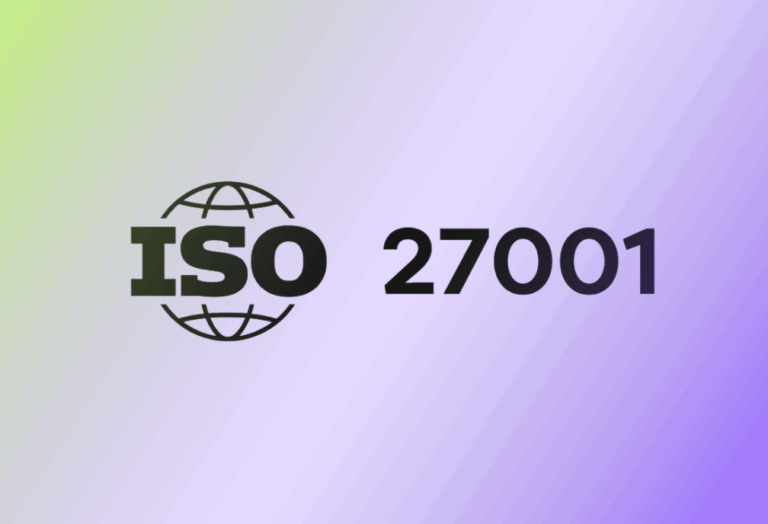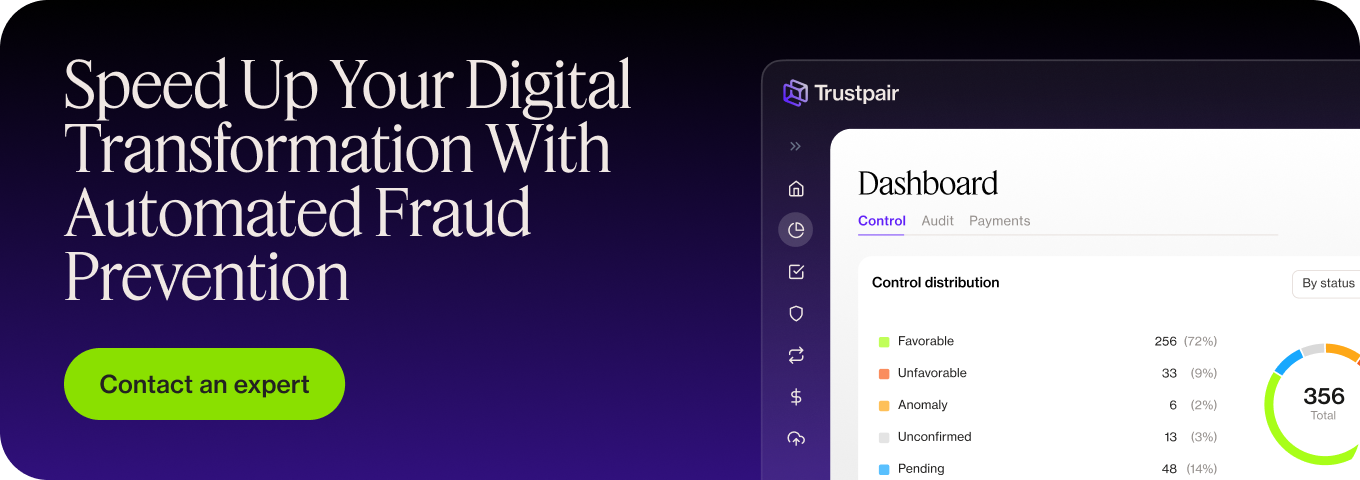ISO 27001 certification is not a mandatory requirement for businesses. Why then, do so many insist on seeing this certificate as part of the supplier contracting process before they can even discuss onboarding?
The standards set by the ISO create an important reputational distinction. Companies that comply are considered ‘secure’, whereas those who don’t are as good as cowboys.
Strengthen your own business security and trust by becoming ISO 27001 compliant, and partner with solutions that continue those standards, such as Trustpair.
What is ISO 27001?
ISO 27001 is an international security standard that businesses can choose to adopt from an accredited certification body. In order to become ISO 27001 certified, companies are required to meet specific policy, risk evaluation and control standards. While it largely focuses on digital security requirements and data management, ISO 27001 also encompasses physical controls.
ISO 27001 Compliance: Importance and Applicability
Many organisations strive for compliance despite the ISO 27001 certification cost because it’s not easy to achieve. Due to the rigorous nature of the certification process, obtaining the ISO status can bring significant competitive advantages to win new contracts as a supplier.
In sectors like finance, ISO 27001 is the bare minimum in terms of entry requirements, especially alongside other regulatory obligations such as Know Your Supplier. Its information security objectives are world-leading.
In either case, ISO 27001 helps businesses to establish their credibility and build trust with clients, increasing customer loyalty over time. When clients are highly-regulated themselves, it can provide the ultimate piece of mind.
However, ISO 27001 is not just a vanity certificate. It’s highly-valued for protecting against cyber attackers and data breach attempts, and has been cited as the main factor in reducing the cost of data breaches by 30%.
What Are the ISO 27001 Compliance Standards?
There are three key ISO 27001 compliance standards to meet:
- ISMS Framework
- Risk treatment and evaluation
- Internal Controls
ISMS Framework
ISMS stands for the information security management system, which provides users with a systematic approach to their data security.
It typically manifests as an IT platform, and enables users to apply their internal data systems and policies at a blanket level. This helps users to gain more control over how data is accessed, shared and used. This means that your ISMS should centralise any and all of the data you may require in one single dashboard for total oversight.
There are different ISMS’ to choose from, but in order to meet the ISO 27001 compliance standards, firms must consider the following factors:
- Data integrity: can data be verified, with protection from being changed or written over? This promotes WORM best practices (write once, read many) to protect the integrity of the information
- Data confidentiality: is private data protected from public or unauthorized access? Device management and role-based restrictions are both key parts of access security controls and robust security practices
- Data accessibility: is the data easily available when it’s needed? This is incredibly important in compliance audit preparation
Risk evaluation
Risk evaluation refers to the assessment and identification of information security risks, alongside their eventual minimisation and monitoring. It includes a gap analysis: the opp opportunity to identify potential threats like past security incidents, unprotected sensitive information and other vulnerable ‘gaps’.
Many firms already have regular risk review processes, but the difference is that this one focuses specifically on the information security risk assessment. Firms must define the scope of their risk assessment within the boundaries of ISO 27001, and then establish their own methodology.
Then:
- Identify business risks, including both outright security threats and significant risks
- Evaluate the risks under the risk management framework using risk scoring, which combines the likelihood of occurrence by severity of consequences
- Introduce technological controls, which you can learn more about below
Controls
Controls are the policies, procedures and restrictions put in place to minimise the chances of the risk materialising into a security event. In particular, the ISO 27001 internal controls can prevent corporate fraud and data breaches.
Fortunately, this section offers more guidance than others. Companies therefore have more resources on adhering to this section of the regulation and meeting their security demands.
ISO 27001 provides a list of 93 different security controls that can be applied, which is not exhaustive, but can be used as a solid base point. These are organised into four categories:
- Organisational: such as policies and structural access controls
- People: such as training and awareness
- Physical: such as guest entry systems and keycards
- Technological: such as information logs, cloud security and changelogs
Common Challenges in ISO 27001 Compliance
The biggest challenge in meeting the demands of ISO 27001 is that it’s not very prescriptive, leaving lots of room, and decision-making, up to the organisation itself. Without set guidelines or hard boundaries, firms can find it hard to take decisive action towards compliance.
Moreover, businesses may struggle to understand the meaning and implications of each section, especially with regards to sector-specific context. This can lead to misinterpretation or incorrect attempts to put information security controls in place, putting sensitive data in jeopardy.
How to Maintain ISO 27001 Compliance
Maintaining ISO 27001 compliance means firms must conduct internal audits and stay on top of the evolving threat landscape. It also means assessing information security risks as they emerge.
Preparing for audits
ISO 27001 certification is not a ‘set it and forget it’ type of course. Instead, compliance requires consistent effort, and you’ll experience regular inspections from external auditors to maintain the status.
Audit preparation is therefore a key part of ISO 27001 maintenance, and companies should mimic the pressures of an audit with their own internal audit functions. This not only highlights any gaps in advance to prepare staff, but is also a compliance prerequisite.
Here are some tips:
- Ensure your ISMS is functioning properly
- Prepare documentation so that it’s a) in the right place and b) has the right access controls
- Work with employees to prepare them for audit interviews
- Ensure you’re working with the most up-to-date version of the risk assessment
Staying on top of the evolving threat landscape
The way that ISO 27001 has been set up is to avoid prescribing specific security protection and implementation methods, in favour of a standards-based approach. While this is beneficial as it gives companies more control over how they meet the standards, it does increase the pressure on firms to be proactive. It’ll become increasingly important especially as the threat landscape evolves.
One solution to this is by partnering with third parties who are also ISO 27001 certified, in order to maintain security standards across the supply chain and mitigate risks. Trustpair is ISO 20022 and 27001 certified and helps companies to meet their key legal requirements by securing third-party payments.
With continual improvement at the top of mind, Trustpair meets this international standard and keeps up with the most up-to-date information security practices. Significantly reducing the risk of fraud, working with Trustpair means partnering with a solution that adheres to the standards and helps you to do the same.
How ISO 27001 Certification Benefits Your Business
Becoming ISO 27001 certified naturally elevates your organisation’s protection against cybersecurity and fraud threats. That’s because it involves elevating your internal systems, policies and procedures to meet the top standards in data management.
But the ISO 27001 certification can have as big a reputational impact as the actual security benefits it provides. Many companies insist on seeing this certificate of compliance as part of managing risks in the supplier onboarding process. With 15% of security breaches happening due to supply chain vulnerabilities, it provides significant peace of mind.
By becoming compliant, firms are likely to experience reputational uplift, with fewer barriers in the contracting process as the ISO 27001 instantly establishes trust.
Strengthening business security with ISO 27001
The ISO 27001 is a highly-coveted certification for businesses, requiring implementation of a sufficient ISMS framework, risk management and ongoing security controls. Organisations should consider the pressures of audits as they strive to comply. Plus opting to partner with third parties that are also ISO 27001 compliant, like Trustpair, can protect the entire supply chain.


